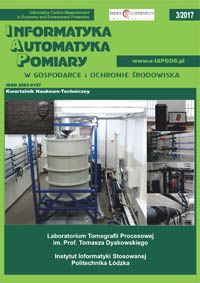Aslam M., Javaid N., Rahim A., Nazir U., Bibi A., Khan Z.A.: Routing Protocols for Wireless Sensor Networks, 2010.
Barrenetxea G., Ingelrest F., Schaefer G., Vetterli M.: Wireless Sensor Networks for environmental monitoring: the SensorScope experience. Proceedings of the 2008 IEEE International Zurich Seminar on Communications, 2008, 98–101.
Chunyao F.U., Zhifang Jiang, Wei Wei: An Energy Balanced Algorithm of LEACH Protocol in WSN. IJCSI International Journal of Computer Science Issues, Vol. 10, Issue 1, No 1, 2013, 354–359.
Ghanem M., Guo Y., Hassard J., Osmond M., Richards M.: Sensor Grids For air Pollution monitoring. Proceedings of the 3rd UK e-Science All Hands Meeting 2004.
Hart J.K., Martinez K.: Environmental Sensor Networks: a revolution in the earth System Science, Earth-Science Reviews, vol. 78, no. 3–4, 2006, 177–191.
Howitt I., Gutierrez J.A.: Ieee802.15.4 low rate-wireless personal area network coexistence issues. Proceedings of the Wireless Communications and Networking Conference (WCNC 2003), 2003, 1481–1486.
Intanagonwiwat C., Govindan R., Estrin D.: Directed Diffusion: a Scalable and robust Communication Paradigm for Sensor Networks. Proceedings of the 6th Annual International Conference on Mobile Computing and Networking (MobiCom 2000), 2000, 56–67.
Khan Z., Aslam N., Sivakumar S., Phillips W.: Energy-Aware Peering Routing Protocol for Indoor Hospital Body Area Network Communication, Procedia Com-puter Science, Vol. 10, 2012, 188–196.
Marks M.: A Survey of Multi-Objective Deployment in Wireless Sensor Networks, Journal of Telecommunications and Information technology, 2010.
Munir S.A., Biao R., Weiwei J., Bin W., Dongliang X.: Mobile Wireless Sensor Network: architecture and enabling technologies for Ubiquitous Computing. Proceedings of the Advanced Information Networking and Applications Workshops (AINAW 2007), 2007, 113–120.
Pantazis N.A., Nikolidakis S.A., Vergados D.D.: Energy-Efficient Routing Protocols in Wireless Sensor Networks: A Survey. IEEE Communications Surveys & Tutorials, Vol. 15, Issue 2, 2013, 551–591.
Qing L., Zhu Q., Wang M.: Design of a distributed energy-efficient clustering algorithm for heterogeneous wireless sensor networks. Journal Computer Communications, Vol. 29 Issue 12, 2006, 2230–2237.
Rasheedl M.B., Javaid N., Javaid A., Khan M.A., Bouk S.H., Khan Z.A., Improving Network Efficiency by Removing Energy Holes in WSNs. J. Basic Appl. Sci. Res. 3(5), 2013, 253–261.
Wang Xiao-yun, Yang Li-zhen, Chen Ke-fei: SLEACH: Secure Low Energy Adaptive Clustering Hierarchy Protocol for Wireless Sensor Networks. Wuhan University Journal of Natural Sciences, Vol. 10, Issue 1, 2005, 127–131.
Yadav L., Sunitha Ch.: Low Energy Adaptive Clustering Hierarchy in Wireless Sensor Network (LEACH), (IJCSIT) International Journal of Computer Science and Information Technologies, Vol. 5 (3), 2014, 4661–4664.
Yick J., Mukherjee B., Ghosal D.: Wireless Sensor Network Survey, Computer Networks, Vol. 52, No. 12, 2008, 2292–2330.







